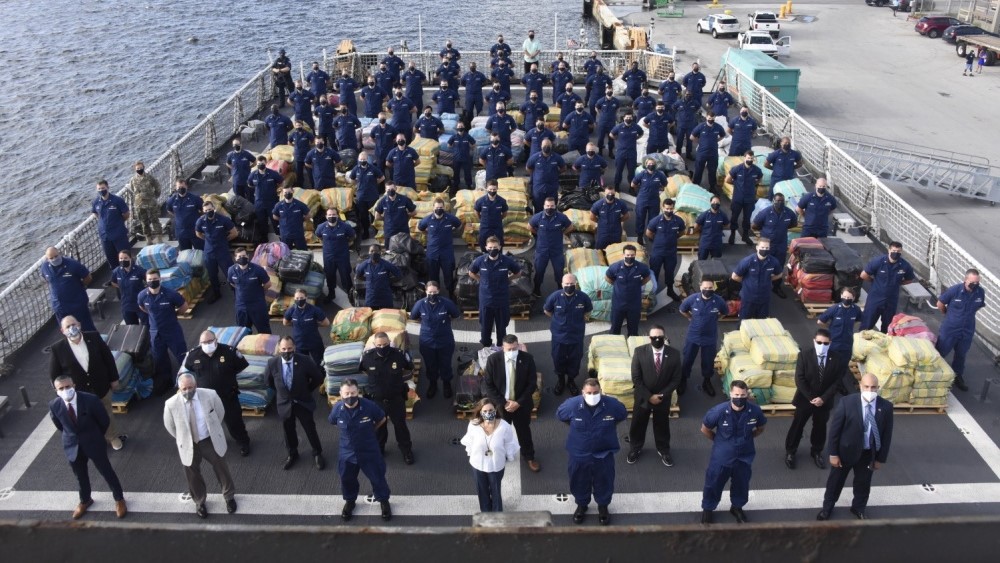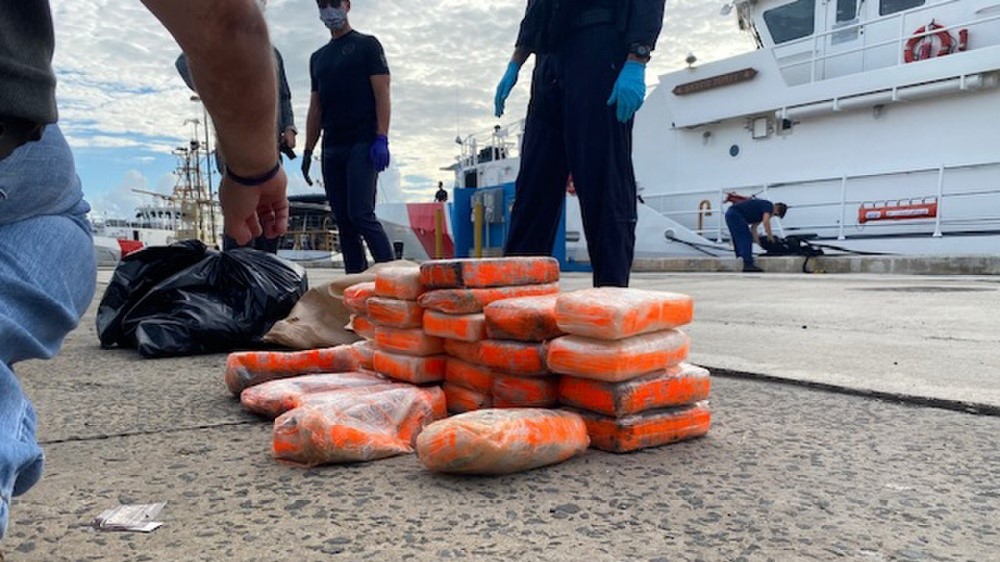MIAMI — From fast boats that hide in Caribbean island chains to homemade drug submarines that launch from Amazonian rivers for a long Pacific voyage, the U.S. effort to halt the cocaine trade over 42 million square miles has been increasingly unpredictable since COVID-19 hit the region in March.
“It was like a roller coaster up and down,” Lt. Col. Andrew Ajamian, chief of Joint Interagency Task Force South’s Strategic Initiatives Group, told the Washington Examiner on Tuesday.
“Depending on the severity of how bad COVID was hitting a particular country and how bad it was affecting their security forces versus how bad it was affecting just the general population from which traffickers come out,” Ajamian said.
By April, President Trump announced enhanced counternarcotics operations to redirect surveillance aircraft, such as the P-8 Poseidon, Navy vessels such as Arleigh Burke-class destroyers, and Coast Guard fast response and national security cutters to the effort.
In seven months, the United States and 21 regional partner nations have seized 216 metric tons of cocaine and 74,000 pounds of marijuana.

The value that would have hit the coffers of transnational criminal organizations, including the regime of Venezuela’s Nicolas Maduro, exceeds $5.7 billion, U.S. Southern Command in Miami told the Washington Examiner.
“Through our long-standing relationships and programs, we have assisted our partners in building capacity,” SOUTHCOM public affairs officer Jose Ruiz told the Washington Examiner of the effort to leverage the assets of nations in the hemisphere.
“As a result, they have participated in 60% of those disruptions,” he added.
Ruiz underscored the multinational detection and monitoring effort led by Joint Interagency Task Force South in Key West.
“In Key West, we are the tip of the spear working with international [and] interagency partners to prevent the flow of drugs,” said Ajamian.
“Almost 15,000 Americans died because of cocaine,” he added, citing fiscal 2018 numbers. “Drugs are a serious threat to this country, and just as much, they’re a threat to our neighbors and partners to the South.”
Ajamian said profits from illicit drug trafficking feed instability, crime, and mass migration across the region. In the U.S., cocaine leads to overdose deaths, hospital visits, ancillary crime related to drug trafficking, and inmate care in prisons.
“Every day where a boat is being stopped and product seized, that’s a tactical action,” he said. “The cumulative effects of those tactical actions over and over again really are enhancing the security of the United States and, frankly, its health.”
‘Instead of two good guys on one bad guy’
Located at Naval Air Station Key West, JIATF-South is a clearinghouse of information collected by U.S. assets across the hemisphere as well as those of partner nations.
The 22 military liaison officers from Caribbean, Central, and South American countries that work alongside the U.S. in Key West are paid for by their host governments. Their role is to exchange intelligence, de-conflict reports, and quickly alert law enforcement officials who make interdictions on the high seas.
“We’re talking about countries hundreds of thousands of miles apart from each other able to quickly talk to each other,” Ajamian explained.

“There’s the ability for rapid speed of information-sharing amongst partners here,” Ajamian added. “We’re not having to send information from our headquarters to another headquarters to another country that has to go through an embassy and then onto another embassy before I can get somebody of theirs.”
With such a vast area to monitor, JIATF-South uses its combined intelligence picture to zero in on those areas where it has indicated drug trafficking is taking place.
That may mean relying on a partner nation’s law enforcement.
“When we have the information that there is an illicit vessel on the water and we don’t have an asset in place, then we’ll work through those liaison officers from whichever country is the most appropriate for their country to respond,” Ajamian said.
Drug trafficking routes in the Eastern Pacific and the Caribbean also provide different challenges to traffickers, and so, there are different approaches to detecting them.
“Deep distance in the Pacific side, short, fast runs on the Caribbean side,” Ajamian said.
The vast Pacific Ocean routes from South American producers to Mexico for overland transfer require boats to be resupplied with fuel and food for crews. Meanwhile, in the Caribbean, especially near the lesser Antilles, both have shorter runs between islands and lots of places to hide.
The 500 military and civilian officials at JIATF-South and 16 agencies such as Customs and Border Protection and the Drug Enforcement Administration are helping to facilitate multiple, daily interdictions by the U.S. Coast Guard and partner countries in the region.
JIATF-South is already on pace to match fiscal 2019’s tally of 280 metric tons of cocaine.
Keeping those drugs off the streets and saving taxpayer dollars in the process requires coordination such as that done at the Key West base, Ajamian stressed.
“Instead of two good guys on one bad guy, let’s split that up,” he said. “That way, you can kind of maximize bang for your buck.”
